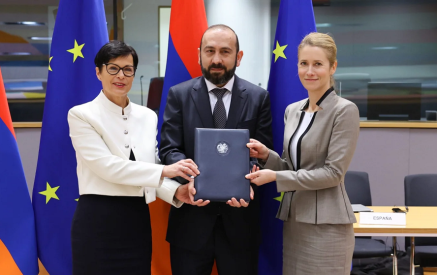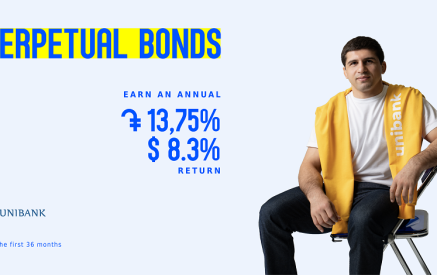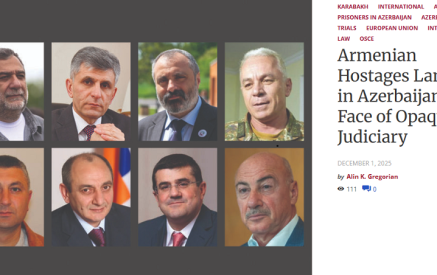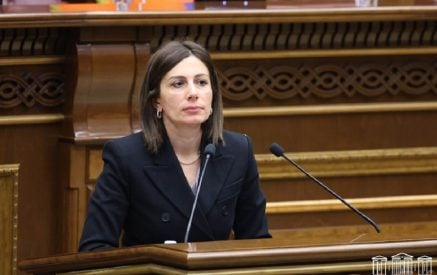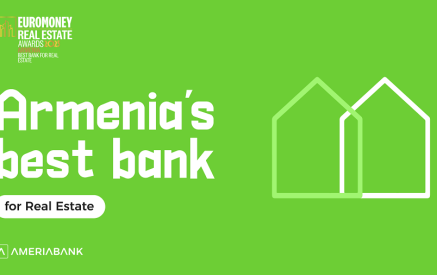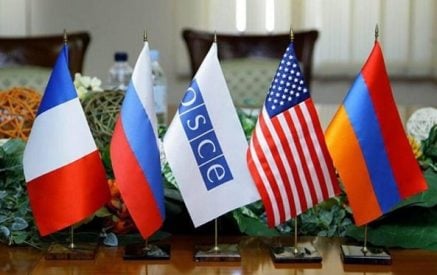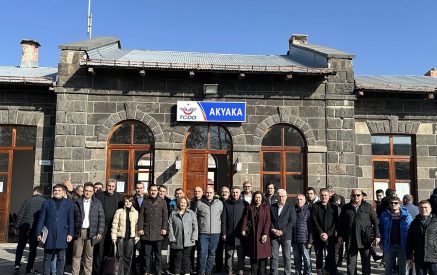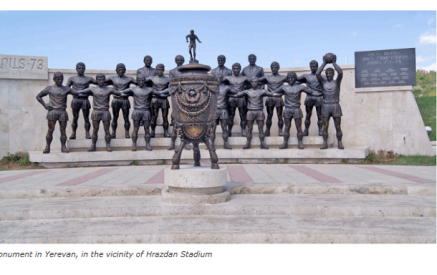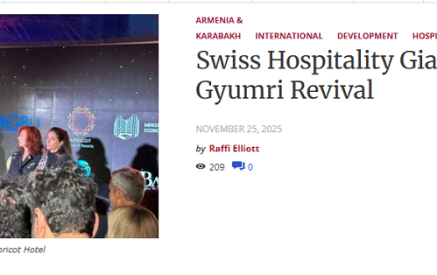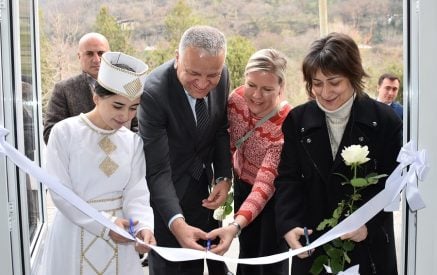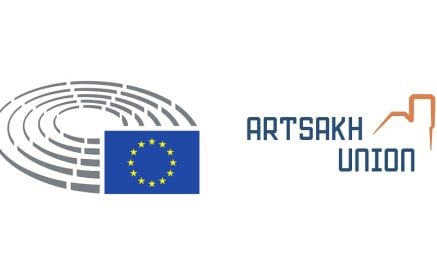Rating-Agentur Expert RA GmbH confirmed the sovereign government credit rating (SGC) of
Armenia at ‘BB-’ (Sufficient level of creditworthiness of the government) in national currency and
at ‘BB-’ (Sufficient level of creditworthiness of the government) in foreign currency. The rating
outlook is stable which means that in the mid-term perspective there is a high probability of
maintaining the rating score.
MAJOR FACTORS THAT INFLUENCED BOTH TYPES OF RATINGS:
Positive factors:
- In 2017, the fiscal deficit was 1,5p.p. higher than expected at 4,8% of GDP due to the
utilization of a Russian provided defense loan. Even though this number was out of target,
it still narrowed as compared to 2016 when the deficit was 5,6% of GDP showing
improving consolidating efforts. Going forward, and given the introduction of the new
fiscal strategy, we anticipate deficits to reduce below the 3% mark; - The banking system remains fairly solid. Capitalization levels in the country are quite
adequate as the capital adequacy ratio was 18,7% as of March 2018 and has remained
stable. Moreover, as of the same date, NPLs to total loans stood at 5,4% showing a
continued reduction for the last two years. Finally, profitability has also been steadily
positive as shown by a ROA figure of 1,4% as of March 2018. Even though the amount of
banks’ assets to GDP remained unchanged, we did see an increase in domestic credit up to
58,2% of GDP in 2017; - The structure of the government’s debt remains stable as it has practically not changed
since our last revision. As of May 2018, short-term debt accounted for 2,6% of total debt,
13,8% had floating interest rate and FX-denominated debt remained elevated at 81,8%;
nevertheless, this type of debt is mostly at favorable conditions; - Armenia’s economy has remained resilient. By end-2017 real GDP grew by 7,5%, a figure
substantially higher than what we previously anticipated. The strong growth was mainly
supported by higher industrial production, growth in overall trade, a hike in the services
sector and increase in construction. Growth momentum carried over into 1Q 2018;
however, we anticipate positive but lower real output in 2018; - The expansionary monetary policy of the government fueled the increase of inflation
slightly toward the 4% target of the Central Bank of Armenia (CBA) in 2017. However, it
has dipped down to 0,9% y-o-y as of June 2018. We anticipate a reduction in the
refinancing rate of the CBA if this scenario were to persist. In general, we see a positive
monetary policy with high credibility and an improved transmission mechanism which
has contributed to the fall of lending rates, causing investment consumption to grow and
the price level to increase.
Restricting factors:
- The spread between the 10Y U.S. government bond and the USD-denominated Armenian
government bond maturing in 2025 is acceptable at 3,3%; - International reserves have been in a rapidly declining trend since November 2017,
despite this, they remain at adequate levels. As of May 2018, they stood at USD 2 bn which
is equivalent to 32,6% of government debt and they cover short-term debt by more than
11x; - GDP per capita in PPP terms is estimated at USD 9,5 th in 2017, a moderately favorable
metric figure as compared to the average of its regional non-oil dependent (RNOD) peers1;
The price level in Armenia increased by 2,6% in 2017. However, it has resumed a declining
trend in 2Q 2018; the y-o-y inflation as of June was 0,9%; - The quality of the fiscal policy is expected to improve substantially as a result of the
introduction of the new fiscal framework aimed at improving fiscal discipline and
augmenting flexibility with the aim to absorb potential unexpected shocks. The new fiscal
rule should also keep government expenditures contained and prepare the authorities to
reduce debt if needed; - Institutional development in the country remains acceptable as there are good conditions
in the country for business, with a moderate rule of law and government transparency.
Nonetheless, corruption remains a drag for economic growth.
Negative factors:
- Government debt increased in 2017 up to 53,5% of GDP and 252,2% of budget revenues
and public debt stood at around 59% of GDP as of the same date. These figures, however,
have remained stable in the current year: as of May 2018, government and public debt
figures have both declined in absolute terms. This is a positive sign that the authorities are
following their debt management strategy. We anticipate government debt to GDP to
remain below the 55% threshold going forward; - The unemployment rate is still high and is estimated to have been 18,9% as of 2017;
- The Armenian stock market remains highly underdeveloped. The market capitalization
was as low as 2,56% of GDP showing just marginal improvement for the past six years; - Competitiveness in the economy remains low dominated by oligopolies. The country’s
position in the global competitiveness ranking of the World Economic Forum was 73rd out
of 138 countries and the economy relies heavily on imports.
Stress factors:
- Financial dollarization remains high, however, it continues to gradually decline; loans and
deposits in FX were equivalent to 60% and 53,2% of total loans and deposits respectively
as of May 2018 (weak stress factor); - The conflict with Azerbaijan for the Nagorno-Karabakh remains unresolved and
escalation is still a latent risk (very weak stress factor).
SENSITIVITY ASSESSMENT:
The following developments could lead to an upgrade:
- Continued consolidation of fiscal metrics: narrowing of the fiscal balance a sustained longterm
drop of government and public debt levels; - Consistent reduction in the dependence on external factors combined with a steep
decrease in levels of financial dollarization.
The following developments could lead to a downgrade:
- Resumed political tensions which would have a material impact in macroeconomic
indicators and investment in the country; - Opposite behavior in regard to our estimated fiscal expectations; i.e. further widening of
the fiscal balance and a sustained increase on government debt in the mid- to long-term
perspective.
1 Non-oil dependent peers include Georgia, Kyrgyzstan and Tajikistan.
“The confirmation of Armenia’s ratings at ‘BB-’ with a stable outlook is underpinned by a strong
and resilient banking sector, consistent and solid economic growth, effectiveness of the monetary
policy and improving fiscal consolidation efforts by the authorities.
However, the creditworthiness of the sovereign remains constrained by high levels of financial
dollarization, elevated government debt levels and high exposure to potential external shocks
given the country’s high dependence on remittances, imports and commodities’ exports.
Moreover, even though we consider that the recent political turmoil will not have a material
impact on the long-term creditworthiness, it could hurt investor confidence adversely affecting
investment in the economy.” – Clarified Hector Alvarez, Rating Associate of Rating-Agentur Expert
RA GmbH.
Responsible expert: Hector Alvarez, Rating Associate of Rating-Agentur Expert RA GmbH
Reviewer: Gustavo Angel, Rating Associate of Rating-Agentur Expert RA GmbH
Research report on Armenia is available at:
https://raexpert.eu/reports/Research_report_Armenia_20.07.2018.pdf







